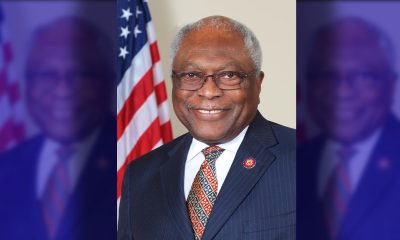Business
What’s on the Economic Horizon for Black America in 2015?

by Starla Muhammad
Special to the NNPA from The Final Call
(FinalCall.com) – While the overall economic picture generated optimism for some last year, as the country heads into 2015 a majority of low and middle income Black, Brown and poor Americans still suffer from financial struggles carried over from the Great Recession.
President Barack Obama, at his end of year press conference, spoke of the creation of 11 million new jobs by businesses over a 57-month period. These gains are the result of steps taken early on by this administration to rescue the economy, said the president.
“Almost all the job growth that we’ve seen has been in full-time positions. Much of the recent pickup in job growth has been in higher-paying industries. And in a hopeful sign for middle-class families, wages are on the rise again,” said Mr. Obama to reporters Dec. 19.
According to the White House, the “U.S. economic recovery took a major step forward in 2014, achieving a number of important milestones.”
In its “Year in Review: Creating Economic Opportunity for all Americans in 2014,” among accomplishments the administration touted:
November, 2014 was the best year of job growth since 1999.
Fifteen thousand jobs were added by the manufacturing sector.
The U.S. has the highest graduation rate on record and more Americans earning post-secondary degrees than ever.
The U.S. was on top as the leading oil and gas producer globally.
There was a continued rise in home prices which cut the number of upside down mortgages from a peak of 14 million to less than 4 million.
Ten million Americans are now insured under the Affordable Care Act and there is a slower rate of rising health care costs.
The federal deficit has been cut by nearly two-thirds.
Additionally, overall unemployment rates continued to fall, averaging in single digits while oil prices decreased globally, meaning lower prices at gas pumps for American consumers.
Growth during the last two quarters for the nation’s Gross Domestic Product (GDP), which is the goods and services consumers purchase, is one economic indicator analysts used when looking at the overall health of the economy noted economist Dr. Julianne Malveaux explained to The Final Call. The third quarter reflected an increase in GDP of 5 percent, according to the U.S. Commerce Department. Personal income increased $54.4 billion, or 0.4 percent, disposable personal income increased $42.4 billion, or 0.3 percent, private wages and salaries increased $38.7 billion and goods-producing industries’ payrolls increased $7.3 billion all in November, according to the department’s Bureau of Economic Analysis. Government wages and salaries also increased $1.8 billion.
“People are poised to spend. At the same time, there is a clear divide between the top and the bottom,” said Dr. Malveaux.
Uneven economic recovery
“You have this bifurcation that says the economy is doing very well and you have people that are saying, ‘but what about me?’ Of course when White America experiences some discomfort, Black America experiences extreme discomfort,” said Dr. Malveaux.
“If I were to summarize the year 2014 there have been macro-economic gains like GDP growth, etc., and micro-economic stagnancy, if not reversals. And so it has not been a stellar year for African Americans. There is vulnerability here in our community that we can’t ignore.”
Blacks continued to make up disproportionately high numbers of the unemployed, lagged behind in income equality and housing disparities and other socio-economic areas in comparison to Whites.
Double digit unemployment continued to plague Black America in 2014. In the final numbers released by the U.S. Department of Labor for November 2014, the overall unemployment rate was 5.8 percent or 9.1 million people out of work. The rate for Blacks was 11.1 percent, for Whites 4.9 percent and for Latinos 6.6 percent. December’s numbers will be released in early January 2015.
“While you see a lower unemployment rate the employment population ratio, which means the percentage of people who are actually working, for White men that number is nearly 70 percent, for Black men the number does not clear 60 percent,” said Dr. Malveaux.
If it’s wealth you see less, if it’s poverty you see more among Blacks, said Dr. Malveaux, president emerita of Bennett College for Women.
Several reports and analysis released in 2014 reflected continued gaps in key areas.
According to talkpoverty.org, in 2013, there were 11 million Blacks in poverty, the equivalent of 27 percent of the overall poverty rate. The Black child poverty rate stood at 38.3 percent. Blacks currently make up between 12-13 percent of the U.S. population.
Much of the wealth accumulated over the last five years has been stock market gains because the Dow has gone up alongside acceleration in housing values. But few Blacks invest in the stock market and a greater percentage of Whites own their homes compared to Blacks, said Dr. Malveaux.
After the real estate bubble burst, home values finally began to stabilize between 2010 and 2013 but at a rate slower for Blacks. Between those years inflation-adjusted median home values fell by 4.6 percent for White households and 18.4 percent for Black households, according to an October report by the Economic Policy Institute, a Washington D.C.-based think tank.
Also, the Federal Reserve has artificially kept interest rates low which impacts the Black community, said Dr. Malveaux. “They’ve kept rates low to stimulate employment. Raising interest rates makes it more difficult for businesses to borrow and therefore more difficult for businesses to hire.”
Many businesses have borrowed but the effect has not trickled down to the masses, she explained.
Asians have fully recovered from the recession; Whites have about 90 percent of what they had before the recession, Latinos have 60 percent and Blacks have 50 percent, added Dr. Malveaux.
More of the same?
Income, asset ownership and the state of Black business are key areas that must be analyzed in determining the progress of Black people, said Cedric Muhammad, an economic strategist, analyst and author of “The Entrepreneurial Secret.” “On those three measures I would say things are more pessimistic,” he told The Final Call.
The Pew Research Center released a mid-December report stating that the wealth of White households was 13 times the median wealth of Black households in 2013, compared to eight times the wealth in 2010.
The median wealth of Black households fell to $11,000 in 2013 compared to Whites which actually increased from $138,000 to $141,000 during the same years.
The median income of Whites is also nearly double that of Blacks.
There are over 2 million Black-owned businesses in the U.S. but only 100,000 of those businesses have more than one paid employee.
“If you look at percentages and ratios none of those is an improvement over our historic deficit with White Americans,” said Mr. Muhammad. He referred to “A Torchlight for America,” a book by the Honorable Minister Louis Farrakhan of the Nation of Islam which pointed out the rate of gain it would take Blacks to completely close the gap in income with Whites. “It shows it would take 400 years for us to completely close the gap,” said Mr. Muhammad.
Dr. Malveaux expects more of the same or worse in 2015 especially now that Republicans have gained control of both houses of Congress. They will be freer to explore their policies that have been hostile to the people at the bottom, she said.
“While they have increased the amount of money that corporations can give to campaigns and to PACs (Political Action Committees), consolidating power among the wealthy, they have been very parsimonious when it comes to benefits and assistance to people at the bottom.”
She expects the GOP to make cuts which will disproportionately affect Blacks like SNAP benefits, formerly known as the federal food stamp program. She expects fewer federal Pell grants to be made available which is the method many poor people rely on to pay for college.
“We can expect to see some erosion of Black economic status. I don’t see anything, and I could be wrong and I hope I am, that suggests anyone is focused on the well-being of African American people. The Congressional Black Caucus has certainly been episodically effective … but they’re an extreme minority. It has been challenging for them to influence public policy,” said Dr. Malveaux.
Changes in public policy, regulations or legislation that would benefit or work for those who continue to struggle in the GOP-dominated Congress are unlikely, she added.
“There is no reason for them to do anything than what they’ve always done which is take it from the needy to give it to the greedy.”
Black people must begin to build wealth through asset, business ownership and land acquisition and not be distracted from focusing on real economic indicators, said Cedric Muhammad.
Viable solution at hand
Like his teacher the Honorable Elijah Muhammad, Minister Farrakhan has consistently stressed the critical need for Black people to “Do for self or suffer the consequences.” Other communities have demonstrated this principle to their benefit.
Collective economic power enables residents in various ethnic enclaves to control the politics and affairs of their communities.
With over $1 trillion in spending power for over 45 million Black people in America that is often talked about, strategic economic targeting of where that money is spent is key to progress.
In his enlightening online lecture series, “The Time and What Must Be Done,” Min. Farrakhan spoke to this very issue.
“Did you know six cents of every dollar is all we spend with Black Businesses? And according to one study made by the Gazelle Index, a national quarterly survey of CEOs of high performing small businesses and businesses owned by diverse groups, if we double what we spend to 12 cents, that alone would create nearly 600,000 additional jobs for Black workers, and would reduce the Black unemployment rate by more than three points (from 13.8 percent to 10.6 percent),” said Min. Farrakhan.
“Don’t tell me ‘we don’t have the power!’ We just have never used it wisely,” he continued. Under the Muslim leader’s direction, the Nation of Islam reintroduced Muhammad’s Economic Blueprint, a program designed to help end poverty and want in the Black community. The program calls for 16 million wage earning Blacks to contribute 35 cents weekly to purchase farmland and help create industry and businesses to begin providing jobs. Such a small amount of painless sacrifice would net over $291 million in one year.
“Today guess what, collectively, we are still richer than 19 countries in the world. Just think about how rich you and I are. That’s why if we support in this year 2015, Muhammad’s Economic Blueprint, it’s only $1.40 a week, it’s only $18.40 a year. But collectively we would have a national treasury that we could begin to get land, because America is for sale,” Ishmael R. Muhammad, student national assistant to Min. Farrakhan and a son of the Honorable Elijah Muhammad told the audience at Mosque Maryam, in a Dec. 28 address.
The program would be a mechanism to buy up the empty lots and abandoned buildings and put young Black people to work to renovate these buildings put them back on the market to provide decent housing to the people, said student Minister Ishmael Muhammad.
“Let’s open up the grocery stores that are missing in these food deserts. It’s not on government to do it for us it’s on us to do it for ourselves.”
For more information on Muhammad’s Economic Blueprint, visit http://www.economicblueprint.org.











































